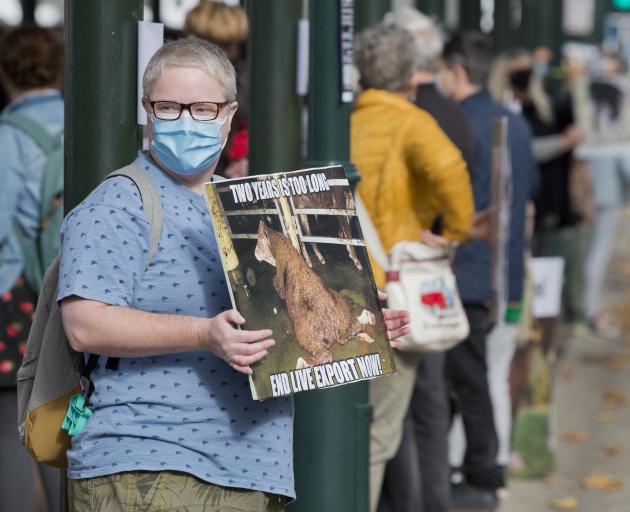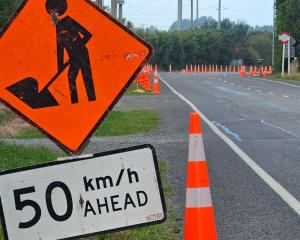
The clock is set to lurch back a further three years, with the National-led government’s determination to reverse a ban on live export by sea; a ban announced three years ago on Sunday and which came into effect in May last year.
The inherent risks with the live export trade were consulted on and acknowledged, and the trade closed down; officially resigned to history via political will, New Zealand taking a world-leading stance.
As world-leading stances tend to do, it triggered other countries to follow suit.
In fact, in the United Kingdom — an important trading partner for New Zealand — its government currently has a Bill going through Parliament to ban live exports. The Bill is likely only a matter of months from Royal Assent.
Repealing the ban here ignores global direction of travel, public sentiment, ignores the emerging and unavoidable risks and threats of this trade, and condemns more than 120,000 animals a year to the suffering caused by long sea journeys and a life in poorly regulated destinations, whilst sinking New Zealand’s international trading reputation with it.
The state of the nation is fragile, so why make it more so?
Live export is not a resilient trade, and at 0.09% of New Zealand’s GDP, its fragility should be forfeited to protect our $54 billion GDP.
Here’s just some of the other whys: ships sink and burn (at least nine since 2009), drowning or burning people and thousands of animals; geopolitics and attack threats delay and block voyages, risking animals being without food and water; boats hit severe and rough weather/sea conditions; ships suffer mechanical, ventilation, drinking-water-production failures; ships have on-board fires.
New Zealand’s own animal welfare laws are redundant in international waters, and no amount of regulation can eliminate the other inherent risks accompanying a seafaring vessel, purpose-built to or not, filled with sentient animals and people, heading out to sea.
The bottom line of this trade is that whether gold, silver or marble, whether chandeliers are installed or buffets provided or any so-called increased regulation is implemented, these things are all just smoke screens and welfare washing; awkward double standards.
Because these things will never stop animals being slaughtered in countries that have less, little or no regulation to ensure they have a humane death at their destination. While here in New Zealand we take pride in and trade on the humane slaughter standards used for our farmed animals, with the live export trade, we ship animals off elsewhere to what might very well be a brutal, filthy, inhumane death, upon which we have zero visibility.
The flimsy at best or downright untruthful at worst arguments used ad nauseum to condone this trade — that these breeding animals are high value, that they are well looked after during voyage (if animals were transported in such conditions in New Zealand, people in charge could be prosecuted) and when they arrive at their destination — deliberately miss the fact that the animals will likely be killed in a manner that isn’t acceptable or even legal in New Zealand.
Live export for breeding is live export for eventual inhumane slaughter. New Zealand has no control over this fact and nor can we impose such a standard in another country.
Our local slaughter trade also takes a hit while a less-regulated country benefits from what could have been our business — we offshore at the expense of our animals and our own local communities.
Which brings us to the final, unavoidable and therefore the most powerful threat to New Zealand’s reputation if this abhorrent trade is dragged back on to the table.
Due to this eventual low-welfare slaughter at destination, exposing footage of how those animals are slaughtered and/or treated can never be ruled out. No control means no control and that means irrepressible reputational damage.
The risk is real because the regulatory control is nil, and those making money from the trade take an "out of sight, out of mind" approach. No remediation of voyage conditions eliminates these destination country risks.
Risks which are a threat to other farmers, and our trading credentials and reputation, our revenue and overall GDP.
Repealing the ban on live export by sea would therefore not only be a case of double standards but also a reckless case of eyes wide shut.
Concentrating the issue down to voyage welfare remediation — through a cattle class standard, developed and driven by a limited number of live export beneficiaries, including veterinarians, and despite the government’s direction, Ministry for Primary Industries (aka, use of taxpayers’ money) — is subterfuge.
Live export for breeding is live export of questionable welfare, in other countries, during life and at slaughter — irrepressible and unacceptable animal welfare compromise that we cannot control.
These should be the "provocations to conversation" that Prime Minister Christopher Luxon seeks.
Otherwise, his National-led government’s strings are being pulled, when quasi-regulation to benefit a few flies in the face of his very own state of the nation stance that, "farmers are frustrated at regulations slowing them down"; when the inherent baked-in risks of the trade are ignored and left to chance, yet "we will not leave our future to chance"; and when going backwards to reignite a trade recognised worldwide to be abhorrent means, quite literally, "New Zealand is going backwards".
And all the while, this is his National-led government’s own doing.
- Helen Beattie is director of Veterinarians for Animal Welfare Aotearoa.












